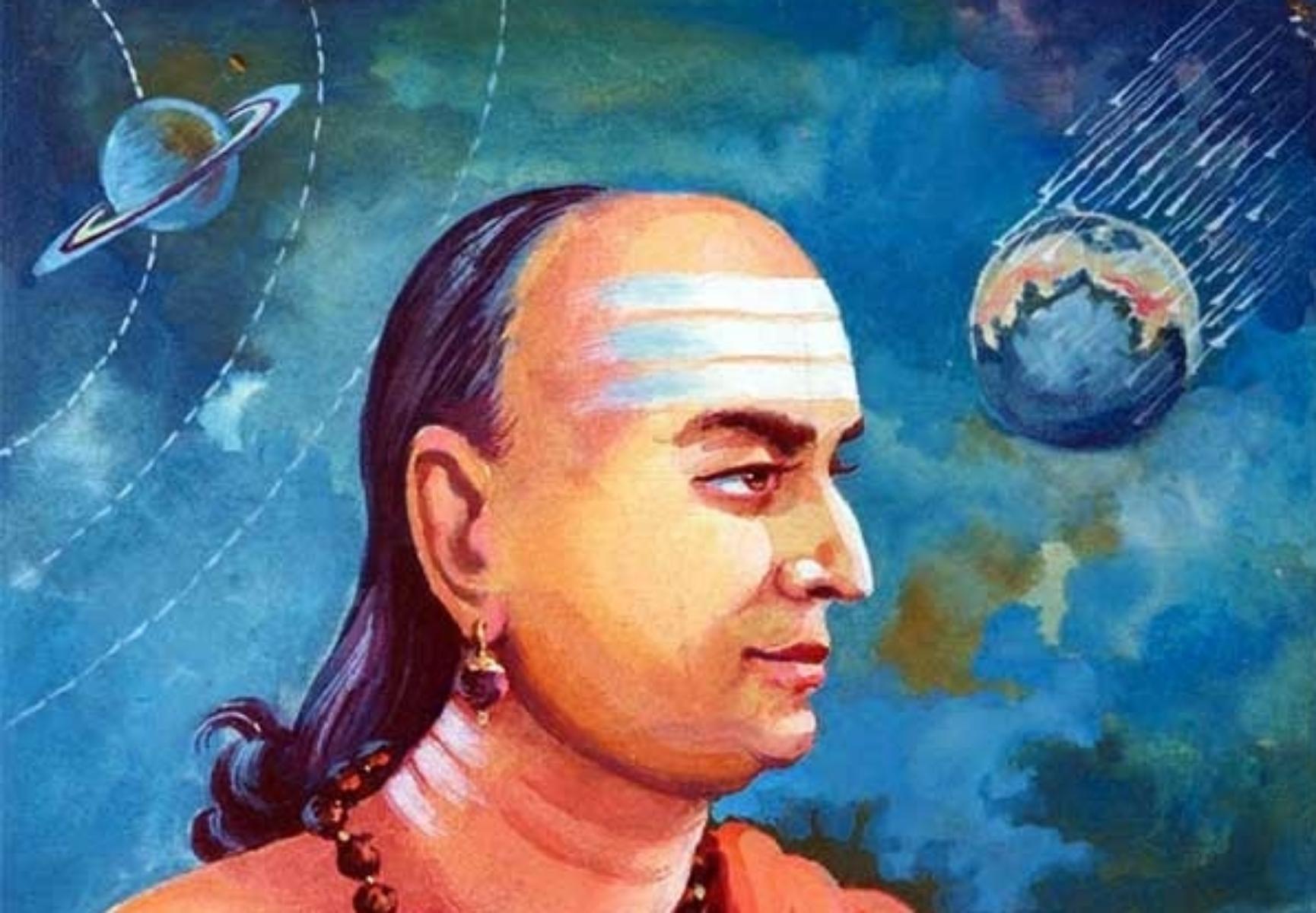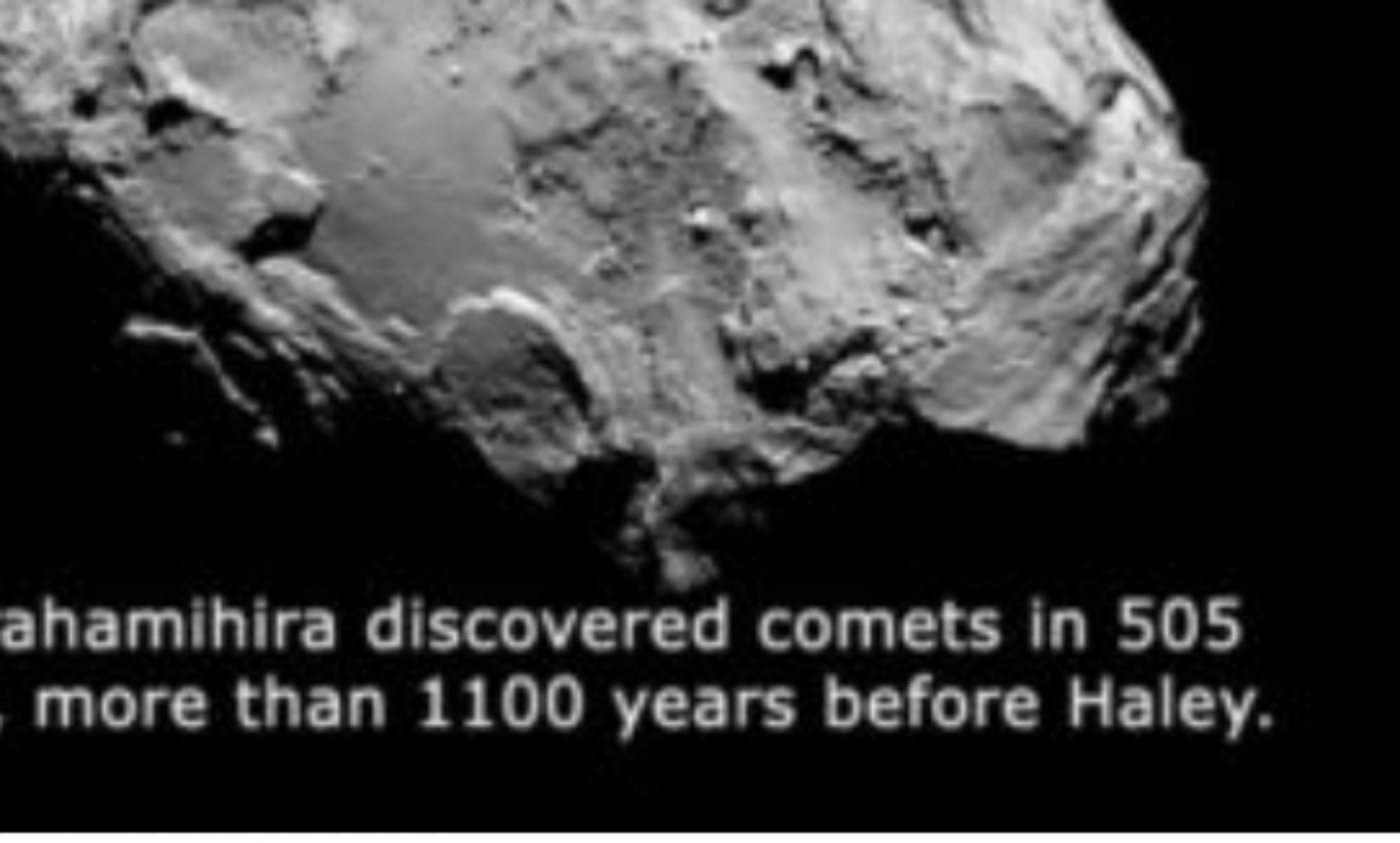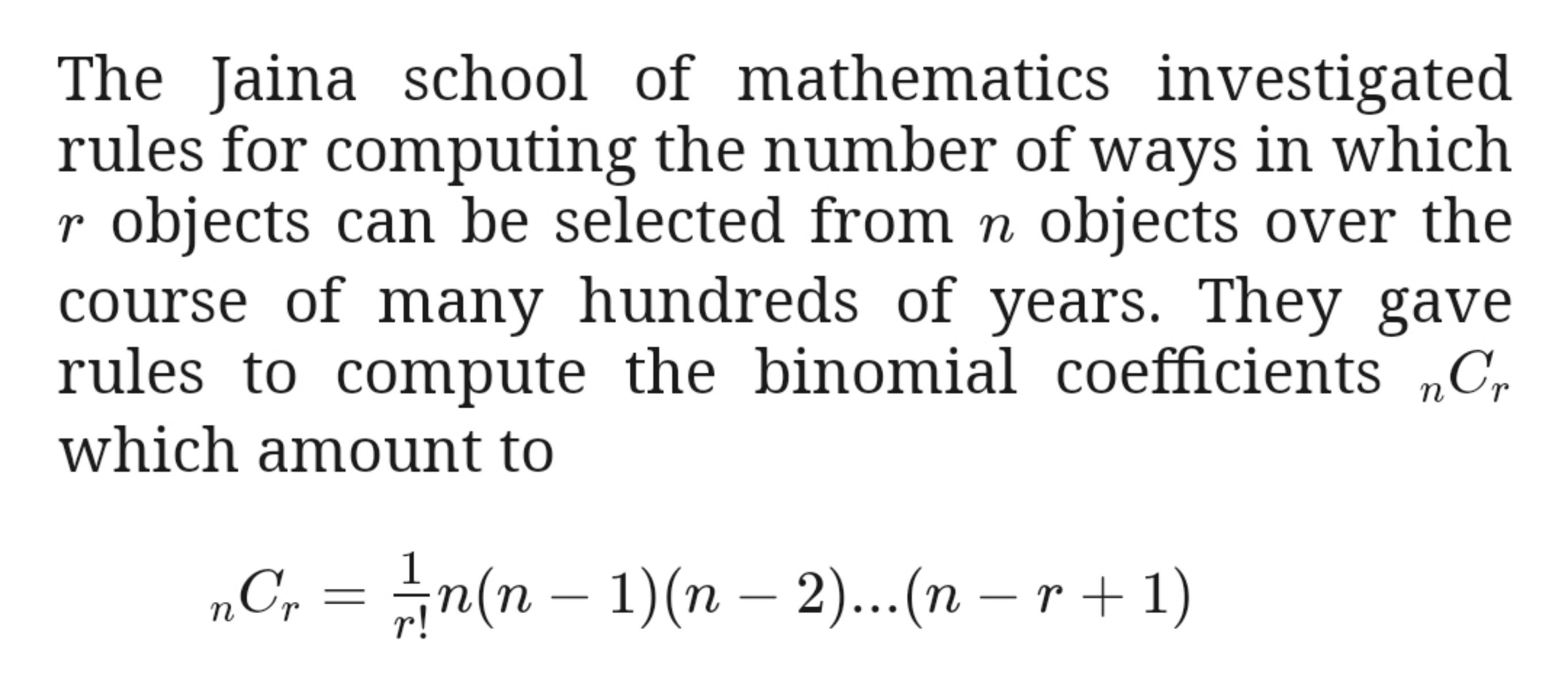Varahamihira – Indian Sage Who Predicted Water Discovery on Mars 1500 Years Ago and A lot More...
Curated from: techtop.org
Ideas, facts & insights covering these topics:
25 ideas
·2.46K reads
16
1
Explore the World's Best Ideas
Join today and uncover 100+ curated journeys from 50+ topics. Unlock access to our mobile app with extensive features.
10. Varahamihira
Varahamihira was born in 505 A.D. into a family of Brahmins settled at Kapittha, a village near Ujjain. His father, Adityadasa was a worshipper of the Sun god and it was he who taught Varahamihira astrology. On a visit to Kusumapura (Patna) young Varahamihira met the great astronomer and mathematician, Aryabhata. The meeting inspired him so much the he decided to take up astrology and astronomy as a lifetime pursuit.
At that time, Ujjain was the centre of learning, where many schools of arts, science and culture were flourishing in the prosperity of the Gupta reign.
37
403 reads
...
Varahamihira, therefore, shifted to this city, where scholars from distant lands were gathering. In due course, his astrological skills came to the notice of King Yashodharman Vikramaditya of Malwa, who made him one of the Nine Gems of his court.
Varahamihira was learned in the Vedas, but he was not a blind believer in the supernatural. He was a scientist.
Like Aryabhata before him, he declared that the earth was spherical.
In the history of science he was the first to claim that some “force” might be keeping bodies stuck to the round earth.
35
245 reads
Gravity
The force is now called gravity. He proposed that the Moon and planets are lustrous not because of their own light but due to sunlight.
Varahamihira’s main work is the book Pancha Siddhantika (Treatise on the five Astronomical Canons gives us information about older Indian texts which are now lost). The work it seems is a treatise on mathematical astronomy and it summarises five earlier astronomical treatises, namely, the Surya Siddhanta, Romaka Siddhanta, Paulisa Siddhanta, Vasishtha Siddhanta and Paitama Siddhanta.
36
230 reads
Brihat-Samhita
It is acclaimed that Pancha Siddhantika of Varahamihira is one of the most important sources for the history of Hindu Astronomy from before the time of Aryabhata.
Another important contribution of Varahamihira is the encyclopaedic Brihat-Samhita. It covers wide ranging subjects of human interest, including astrology, planetary movements, eclipses, rainfall, rainfall, clouds even domestic relations, gems, pearls and rituals.
35
188 reads
...
Brihat- Samhita: Varahamihira's most notable work, the Brihat- Samhita is an encyclopaedic work, mostly about divination but also includes work on architecture, temples, planetary motions, eclipses, timekeeping, astrology, seasons, cloud formation, rainfall, agriculture, mathematics, gemology, perfumes and many other topics. The volume expounds on gemstone evaluation criterion found in the Garuda Purana, and elaborates on the sacred nine Pearls from the same text. It contains 106 chapters and is known as the "great compilation".
36
136 reads
Comets
Varahamihira in 550 AD have described a large number of comets in the Brhat Samhita. He wrote over sixty couplets about comets. He did not have the modern facilities like Telescope or other electronic equipment. He says that sages Garga, Parasara, Asita, Devala and others had already written about the comets.
He was also an astrologer and has written on all the three branches of astrology. His son Prithuyasas has also contributed in the Hindu astrology through his work, Hora Sara.
36
145 reads
the discovery of the trigonometric formulas. He improved the accuracy of the sine tables of Aryabhata l. He defined the algebraic properties of zero as well as of negative numbers. Furthermore, He was among the first mathematicians to discover a version of what is now known as the Pascal’s triangle. He used it to calculate the binomial coefficients.
Varahamihira made some significant observations in the field of ecology, hydrology and geology too. He was the first person who predicted underground water.
35
126 reads
Varahamihira’s mathematical work included the discovery of the trigonometric formulas. He improved the accuracy of the sine tables of Aryabhata l. He defined the algebraic properties of zero as well as of negative numbers. Furthermore, He was among the first mathematicians to discover a version of what is now known as the Pascal’s triangle. He used it to calculate the binomial coefficients.
Varahamihira made some significant observations in the field of ecology, hydrology and geology too. He was the first person who predicted underground water. His claim that plants and termites serve as indicat
35
51 reads
Varahamihira’s mathematical work included the discovery of the trigonometric formulas. He improved the accuracy of the sine tables of Aryabhata l. He defined the algebraic properties of zero as well as of negative numbers. Furthermore, He was among the first mathematicians to discover a version of what is now known as the Pascal’s triangle. He used it to calculate the binomial coefficients.
Varahamihira made some significant observations in the field of ecology, hydrology and geology too. He was the first person who predicted underground water. His claim that plants and termites serve as indicators of underground water is now receiving attention in the scientific world.
Varahamihira, without any scientific equipment, derived the true value of equinox. This value is very important for the modern day Geostationary Satellites.
35
84 reads
...
His claim that plants and termites serve as indicators of underground water is now receiving attention in the scientific world.
Varahamihira, without any scientific equipment, derived the true value of equinox. This value is very important for the modern day Geostationary Satellites.
35
86 reads
Trigonometric
Varahamihira made some important mathematical discoveries. Among these are certain trigonometric formulae which translated into our present day notation correspond to
\sin x = \cos(\large\frac{\pi}{2}\normalsize - x)sinx=cos(2π−x),
\sin^{2}x + \cos^{2}x = 1sin2x+cos2x=1, and
\large\frac{1}{2}\normalsize (1 - \cos 2x) = \sin^{2}x21(1−cos2x)=sin2x.
35
93 reads
Varahamihira made some important mathematical discoveries. Among these are certain trigonometric formulae which translated into our present day notation correspond to
\sin x = \cos(\large\frac{\pi}{2}\normalsize - x)sinx=cos(2π−x),
\sin^{2}x + \cos^{2}x = 1sin2x+cos2x=1, and
\large\frac{1}{2}\normalsize (1 - \cos 2x) = \sin^{2}x21(1−cos2x)=sin2x.
35
74 reads
Permutation And Combinations
Another important contribution to trigonometry was his sine tables where he improved those of Aryabhata I giving more accurate values. It should be emphasised that accuracy was very important for these Indian mathematicians since they were computing sine tables for applications to astronomy and astrology. This motivated much of the improved accuracy they achieved by developing new interpolation methods.
The Jaina school of mathematics investigated rules for computing the number of ways in which rr objects can be selected from nn objects over the course of many hundreds of years. They gave rules
35
53 reads
Another important contribution to trigonometry was his sine tables where he improved those of Aryabhata I giving more accurate values. It should be emphasised that accuracy was very important for these Indian mathematicians since they were computing sine tables for applications to astronomy and astrology. This motivated much of the improved accuracy they achieved by developing new interpolation methods.
The Jaina school of mathematics investigated rules for computing the number of ways in which rr objects can be selected from nn objects over the course of many hundreds of years.
35
38 reads
...
However, Varahamihira attacked the problem of computing _{n}C_{r}nCr in a rather different way. He wrote the numbers nn in a column with n = 1n=1 at the bottom. He then put the numbers rr in rows with r = 1r=1 at the left-hand side. Starting at the bottom left side of the array which corresponds to the values n = 1, r = 1n=1,r=1, the values of _{n}C_{r}nCr are found by summing two entries, namely the one directly below the (n, r)(n,r) position and the one immediately to the left of it.
35
38 reads
Pascal’s Triangle And Magic Square
Of course this table is none other than Pascal's triangle for finding the binomial coefficients despite being viewed from a different angle from the way we build it up today. Full details of this work by Varahamihira is given in
Hayashi, in , examines Varahamihira's work on magic squares. In particular he examines a pandiagonal magic square of order four which occurs in Varahamihira's work.
35
46 reads
Surya Siddhanta & description on planet Mars:
Pancha siddhantika includes Surya Siddhanta, an astronomical treatise which explains or determines the true motions of the luminaries.Under this work,he has also explained the estimated diameters of the planets, like Mercury,Venus,Mars,Saturn and Jupiter.
The book gave the locations of several stars other than the lunar nakshatras(constellations) and the calculation of solar eclipses.The book also had a significant coverage on kinds of time, the length of the year of gods and demons,day and night of god Brahma,the elapsed period since creation,how planets move eastwards and sidereal revolution.
35
53 reads
Mars
Surya Siddhanta mentioned the Mars’s diameter (which was calculated to be 3,772 miles that has an error within 11% of the currently accepted diameter of 4,218 miles), circumference and also carries calculations on and about solar eclipses and lunar eclipses, its color and portion of the moon as well.
Apart from these, Varahamihira also predicted the presence of water on Mars. The book had a detailed description of planet Mars. He had said in his book that planet Mars has both water and iron present on its surface, which have now been revealed by NASA and ISRO.
36
65 reads
Solar Sy
He was the first to mention and explain how each planet in the solar system has been created by and centered on the sun.
It’s intriguing to know that during NASA’s Mars mission, Arun Upadhyay, a retired IPS, did a comparative study of Varāhamihira’s calculations about Mars and found certain similarities.
Though the original book of Surya Siddhanta till date remains untraced, but somehow a few scholars had taken their notes for their own research work. Many fear that the original version was stolen by the other astronomers from overseas.
35
51 reads
...
The present version of Surya Siddhanta, which is often used by Panchang experts to predict festive dates and nakshatras, was modified by Bhaskaracharya during the Middle Ages.
It is learnt, Varahamihira humbly said about his own treatises: “The science of Astrology is a vast ocean and is not easy for everyone to cross it. My treatises provide a safe boat.” Truly, even now they are acknowledged as masterpieces.
35
45 reads
Works of Varahamihira
Varahamihira made great contributions not only in the field of mathematics; he was also an astrologer and is considered among the greatest Acharyas of modern astrology. Varahamihira’s son Prithuyasas also contributed to Hindu astrology and his book Hora Sora is a famous book on horoscopy. Listed below are some of the important works of Varahamihira.
Pancha- Siddhantika: Also known as the Treatise on the Five Astronomical Canons dated 575 AD that now give us information about older lost Indian texts. The book of Pancha- Siddhantika is one of the main works by Varahamihira.
35
47 reads
The 5 Siddhantas
The work is a treatise on mathematical astronomy and it summarises 5 earlier astronomical treatises, namely the Surya, Romaka, Paulisa, Vasishtha and Paitamaha Siddhantas. It is a compendium of Vedanga Jyotisha as well as Hellenistic astronomy including Greek and Roman elements. The five siddhantas are elaborated below-
• Surya Siddhanta, which is the Siddhantika of the Sun was actually composed by the ancient asura king Mayasura, who was also known as Mamuni Mayan as stated in the text by Varahamihira.
35
36 reads
...
• Vasishtha Siddhanta, which is so called from one of the stars of the Great Bear, was composed by Vishnucandra.
• Paulisa Siddhanta was taken from Pulisa which is supposed to be from Alexandria and was composed by Pulisa.
• Romaka Siddhanta was the Doctrine of the Romans, which is the subjects of the Roman Empire and was composed by Srishena.
• And lastly there is the Patiamaha Siddhanta.
35
41 reads
....
•Varahamihira made some significant observations in the field of ecology, hydrology and geology too. His claim that plants and termites serve as indicators of underground water is now receiving attention in the scientific world. He was also a prolific writer. His mastery of Sanskrit grammar and poetic metre enabled him to express himself in a unique style.
35
43 reads
....
•His encyclopaedic knowledge and his lively presentation of subjects, as dry as astronomy, made him a celebrated figure. His treatise such as Pancha Siddhantika (Five Principles), Brihatsamhita (Master Collection), Brahjataka(Astrological work) have put him on as high a pedestal in Astrology as Kautilya’s in Political philosophy, Manu’s in Law or Panini’s in Grammar.
35
44 reads
IDEAS CURATED BY
卐 || एकं सत विप्रा बहुधा वदन्ति || Enthusiast || Collection Of Some Best Reads || Decentralizing...
अर्हम् Arham's ideas are part of this journey:
Learn more about scienceandnature with this collection
The history of fashion
The impact of fashion on society
The future of the fashion industry
Related collections
Similar ideas
Read & Learn
20x Faster
without
deepstash
with
deepstash
with
deepstash
Personalized microlearning
—
100+ Learning Journeys
—
Access to 200,000+ ideas
—
Access to the mobile app
—
Unlimited idea saving
—
—
Unlimited history
—
—
Unlimited listening to ideas
—
—
Downloading & offline access
—
—
Supercharge your mind with one idea per day
Enter your email and spend 1 minute every day to learn something new.
I agree to receive email updates




